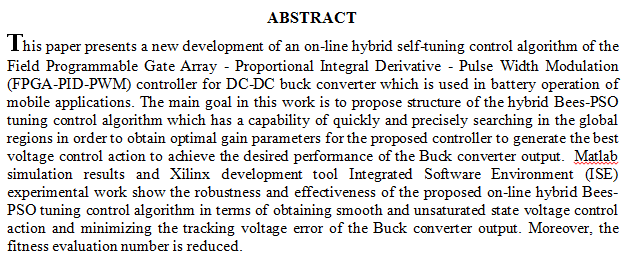
This paper develops the work of Mary Florence et.al. on centralizer of semiprime semirings and presents reverse centralizer of semirings with several propositions and lemmas. Also introduces the notion of dependent element and free actions on semirings with some results of free action of centralizer and reverse centralizer on semiprime semirings and some another mappings.
 (2)
(2)
 (1)
(1)
The main objective of the audit is The asset is maintained and operated efficiently and is done through to detect fraud and errors in the financial statements and to verify the accuracy and accuracy of the information contained therein and to give a neutral technical opinion on the basis of that, thus the auditor has a professional responsibility in achieving this goal, and that the effects of issuing a wrong opinion works on The loading of the beneficiaries is significant damage, And therefore the presence of any error or bias of the auditor when taking personal judgments in relation to the determination of the relative importance and the selection of audit samples and determine the adequacy and validity of evidence and implemen
... Show MoreThis study is aimed to Green-synthesize and characterize Al NPs from Clove (Syzygium aromaticum
L.) buds plant extract and to investigate their effect on isolated and characterized Salmonella enterica growth.
S. aromaticum buds aqueous extract was prepared from local market clove, then mixed with Aluminum nitrate
Al(NO3)3. 9 H2O, 99.9% in ¼ ratio for green-synthesizing of Al NPs. Color change was a primary confirmation
of Al NPs biosynthesis. The biosynthesized nanoparticles were identified and characterized by AFM, SEM,
EDX and UV–Visible spectrophotometer. AFM data recorded 122nm particles size and the surface roughness
RMs) of the pure S. aromaticum buds aqueous extract recorded 17.5nm particles s
 (3)
(3)
 (1)
(1)
This study seeks to shed light on the aspects of visual pollution and its impact on the aesthetics of the town of Al-Eizariya known to suffer from the phenomenon. In order to identify the real causes of the problem which develops in various forms and patterns, threatening not only the aesthetic appearance of the towns, but also causes the emergence of new problems and phenomena that will have negative repercussions on the population. The researcher uses the analytical descriptive method to analyze the phenomenon of visual pollution in terms of reality, development, manifestations and spread and uses photos which document the visual pollution and its impact on the aesthetics of the known. The study concluded the existence of a strong rela
... Show MoreThis paper investigates the effect of magnetohydrodynamic (MHD) of an incompressible generalized burgers’ fluid including a gradient constant pressure and an exponentially accelerate plate where no slip hypothesis between the burgers’ fluid and an exponential plate is no longer valid. The constitutive relationship can establish of the fluid model process by fractional calculus, by using Laplace and Finite Fourier sine transforms. We obtain a solution for shear stress and velocity distribution. Furthermore, 3D figures are drawn to exhibit the effect of magneto hydrodynamic and different parameters for the velocity distribution.
 (3)
(3)
 (1)
(1)
Staphylococcus aureus is a common pathogenic agent due to its ability to cause various types of infections, ranging from mild skin infections to sever systemic diseases. One of the most virulence factors of this bacterium is its ability to from biofilms on solid surfaces by anchoring the planktonic cells and by producing a protective layer of extra polymeric substances. Biofilm formation is controlled through many genes. The most important ones are icaA and icaD. Dentures are prosthetic devices that are made of different materials to replace lost teeth. The aim of this study is to examine the ability of different types of denture materials to support the biofilm formation of S. aureus at phenotypic level by detecting ba
... Show More (2)
(2)
 (5)
(5)
Background: Postoperative nausea and vomiting (PONV) are one of the most common complaints following laparoscopic cholecystectomy.
Objective: This study was designed to compare the effects of dexamethasone, metoclopramide, and their combination on preventing PONV in patients undergoing laparoscopic cholecystectomy.
Methods: A total of 135 patients enrolled in the study. American Society of Anesthesiologists (ASA) physical status I and II patients were included in this randomized, double blind, placebo-controlled study. Patients were randomly assigned to group A administered 8mg iv dexamethasone, group B received metoclopramide 10 mg, group C received combination of 8mg de
... Show MoreAbstract The present study on the prevalence of intestinal parasitic infection from July 2003 to July 2004 ,was conducted among children aged(less than 5 -14 )years attending AL-Daura Health Centre in Baghdad City .(350) specimen were choosen randomly and examined, 160(45.7%) of these were infected , 140 (87.5%) harboured one parasite while 20 (12.5%) harboured more than one parasite.190 (54.3%) were non infected with any of intestinal parasite . It was observed that the most common intestinal protozoa among children is Giardia lamblia, followed by Entamoeba histolytica and Blastocystis hominis with pre
In this research, rabbit femurs were implanted with CP Ti screws coated with a combination of CaCO3 and nanohydroxyapatite, and the effect on osseointegration was assessed using histological and histomorphometric examination at 2 and 6 weeks. CaCO3 and nanohydroxyapatite were combined with the EPD to coat the surfaces of the CP Ti screws. The femurs of five male rabbits were implanted with coated and uncoated implant screws. Healing time was divided into two groups (2 and 6 weeks). After 2 and 6 weeks of implantation, the histological examination revealed an increase in the growth of bone cells for coated screws, and the histomorphometric analysis revealed an increase in the percentage of ne
... Show More (8)
(8)
 (8)
(8)
